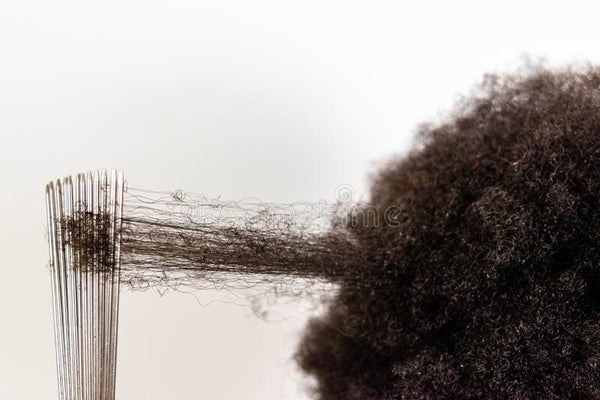The Difference Between Shedding And Breakage
Salt. Sugar. At first glance, these two substances look very similar. They’re both white and crystalline.
As children, many of us watched our mothers bake and were all too happy to dip a small finger into what we thought was spilled sugar on the counter.
How many times did your tongue let you know that it was salt instead? I don’t know about you, but I only had to make that mistake once.
Now as an adult who enjoys baking on occasion, I tend to be a bit messy while measuring ingredients. But before I go finger dipping, my taste buds remind me of the consequences if I’ve misjudged which condiment I’m reaching for.
We all know that sugar and salt are different and serve very different functions. However, outside of their respective packages, it takes more than a quick glance to tell them apart. In fact, scientists use a microscope to tell the two substances apart.
And no matter which you prefer on the rim of your margarita glass, in excessive amounts, both can be equally harmful to your health.
Compare that to shedding and breaking hair. At first glance, they look similar. All you see is hair in your comb, on your shirt or on your bathroom floor. Whether or not you are new to your healthy hair journey, seeing all that hair may be disheartening if not a little disturbing.
Though many women use the terms breakage and shedding interchangeably, they are in fact quite different and while both are natural, excessive amounts of either can be harmful to both your hair’s health and styling options.
Fortunately however, you won’t need a microscope to discern the difference.
What is shedding?
Shedding happens when your hair reaches the end of its growing cycle. Shed hairs fall naturally from the scalp and will have a tiny white bulb attached to one end. Since they fall from the scalp, shed hairs tend to be quite long (usually the full length of your hair).
Are you seeing a lot of hairs with white bulbs on the end? Don’t worry. According to the American Academy of Dermatology (AAD), it is normal to lose 50-100 hairs per day.
What is breakage?
If you did not see a white bulb on the end of your hair strand, you are likely experiencing breakage. Breakage happens when the hair shaft is weakened or damaged and the hair breaks at the point of weakness when stress like styling manipulation is applied.
This damage can happen in many ways, examine your current hair care routine checking for common stressors.
- Do you use the flat iron* more often than once a week (heat damage)?
- Do you handle your hair roughly while combing or brushing (mechanical damage)?
- Do you or your stylist apply your relaxer from root to ends every time you receive a touch-up (chemical damage)?
If you answered yes to any of the above, your hair is subject to breakage. As stated before, shedding and and minimal breakage are both normal. It’s when either becomes excessive, that you have a problem on your hands. Fortunately, there are easy ways to combat both.
 How to Combat Excessive Shedding
How to Combat Excessive Shedding
Tea Rinses – Simply boil several tea bags and let them steep overnight. After washing your hair, pour the tea over your scalp and hair and massage.
This is best done before deep conditioning* as tea can sometimes be a bit drying to your strands. Feel free to experiment with different types of tea (green, black, etc.).
Garlic Treatments – If you don’t mind smelling like pizza for a while, feel free to make your own treatment at home. The easiest way is to soak minced garlic in your favorite carrier oil. This is called an infusion (soaking a herb in an oil or liquid).
Apply this infusion to your scalp as a hot oil treatment and follow up with a moisturizing shampoo and conditioner.
For those who prefer an easier and less smelly method, many companies make unscented garlic shampoos*, conditioners, and hot oil treatments. Note however that the shampoos tend to be drying so you will need to follow up with a moisturizing conditioner*.
Check with a medical professional – Anemia, PCOS, thyroid problems and a host of other medical issues can have negative effects on the health of your hair. If there is an underlying illness, products or home remedies may not help.
How to Combat Excessive Breakage
Cut back on heat usage – If you’re using your flat iron* more than once a week, that’s probably too much. Find other ways to maintain your straight hairstyle. If you want a curly style, roller sets are a great no-heat option. Maintain it with flexi rods* or pin curls.
Moisturize, moisturize, moisturize – A lot of breakage occurs because our hair is dry. Both relaxed and natural heads should start off moisturizing and sealing daily. Once you become better at gauging your hair’s needs, you can adjust this schedule accordingly.
Protect those ends – Breakage is natural but you should still do everything in your power to prevent it as much as you can. Try as we might, the ends are the oldest part of our hair and always need a touch more pampering so protect them! The best way to do this is to keep your ends well moisturized and wear protective styles often.
Stretch your chemical services – Relaxer and color overlap is one of the biggest causes of hair breakage. During a touch-up, relaxers and hair color should be applied to the roots only. Stretching the length of time between these to a minimum of 12 weeks ensures that you or your stylist can clearly see the new growth.
Comb your hair gently – Handle your hair like it is fine silk. While naturals are encouraged to detangle on wet hair, many relaxed women prefer to comb hair that is damp to nearly dry. Figure out what works best for you and your hair and stick with it.
Salt and sugar. Shedding and breakage. Knowing the difference makes all the difference.





